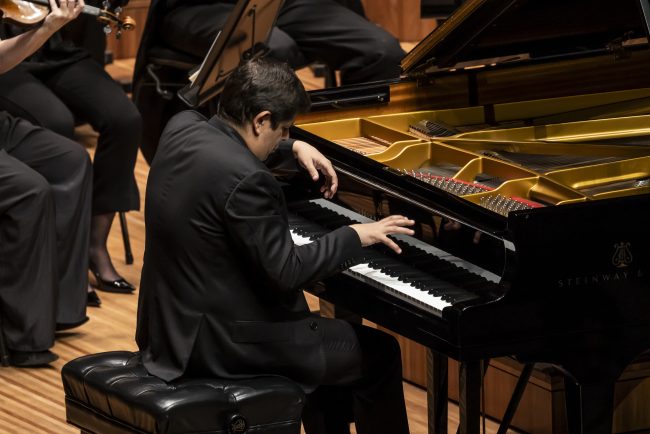Friday 1 August, 2025
Review by Paul Neeson (Arts Wednesday)
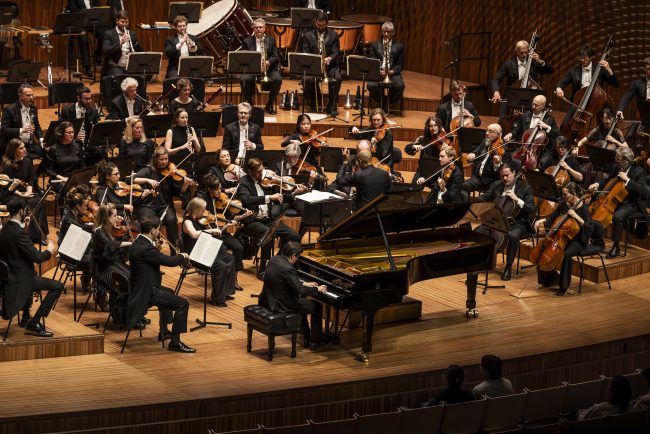
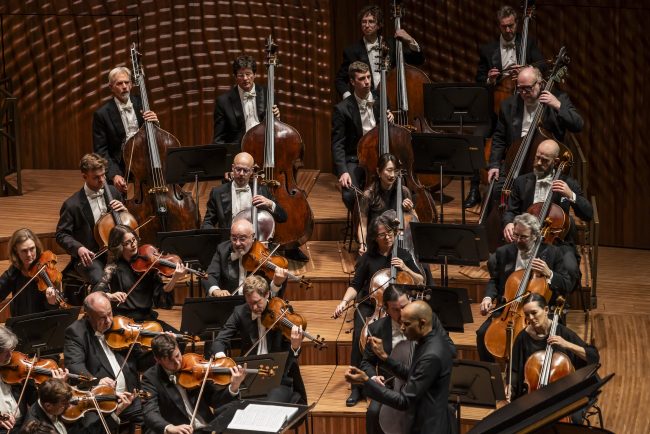
I’ve often thought for an orchestral musician, the absolute honour of opening a symphony concert with an exposed solo must be so exhilarating and at the same time so terrifying. The audiences’ expectations are greeted by you alone (no pressure). Last night such honour was given to Principal Cello, Catherine Hewgill in Rossini’s William Tell Overture. All eyes and ears were upon her. While the timbre was mellow and soulful, the phrasing took a while to settle into a comfortable space until her fellow cellos joined in. (But more on Hewgill in the 2nd half).
German guest Conductor, Kevin John Edusei lead the forces while Rossini’s storm brewed in a way that delivered all the emotion required by the score, but the discipline was lacking. His baton style expressed all the grand gestures admirably, but the tight precision that we are accustomed to, particularly in the strings, was absent. Then after the sunny interlude that featured some exquisite work from Acting Principal Flute, Emma Sholl, the solo trumpet call heralded the gallop (aka The Lone Ranger theme) which we were destined to hear again referenced in Shostakovich’s Symphony No. 15. And who doesn’t love a jolly good gallop, especially with a tightly controlled accelerando.
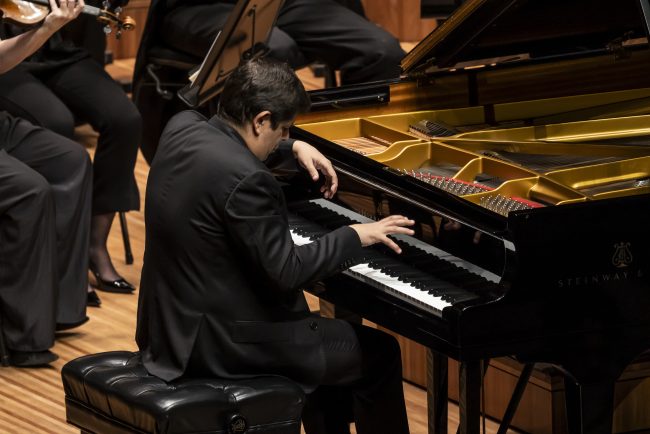
Next on stage was Spanish born pianist, Javier Perianes as soloist in the 5th (and final) Piano Concerto of Camille Saint-Saëns. A very lyrical late-romantic work, Perianes performed with consummate skill, from the feathery flourishes to the marcato punctuation. Never having been a concert soloist or a conductor, I can only wonder how that collaboration plays out. Only the musicians know what occurred during the rehearsals, but my sense was that Perianes controlled the orchestra throughout, particularly the rubatos, and Edusei was happy to take his lead, only having to convey his tempi to the musicians at the back of the orchestra. And they did play as one, so whatever the strategy, it worked.
The 5th Concerto is nicknamed “The Egyptian” in line with the Orientalism fad of the late 19th Century. Yvonne Frindle went to some lengths to point out the ‘Oriental’ elements we should listen out for in her pre-concert talk. But I have to say that in context Saint-Saëns’ musical view of the ‘East’ only got as far east as say, Sicily. The only thing Egyptian about the concerto was its place of birth. Saint-Saëns composed it in three weeks while staying in Cairo.
Perianes reaffirmed his musical credentials with an unexpectedly beautiful encore, Serenata Andaluza by his compatriot, Manuel de Falla. Composed four years after the Saint-Saëns, it is a lyrical serenade imbued with the flavours of Andalusia, but not so much the fiery rhythms.
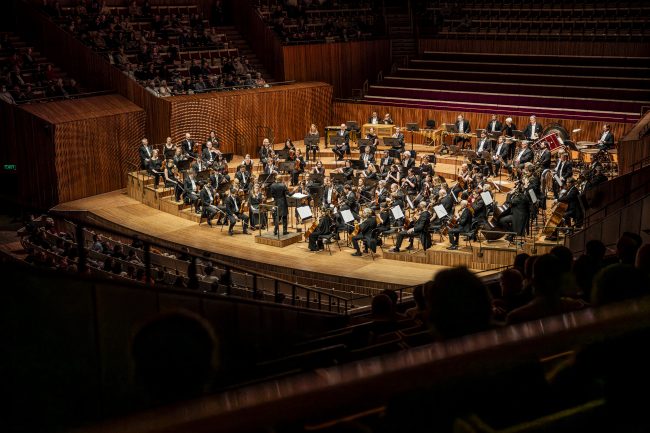
And so to our last piece for the night, Shostakovich’s 15th Symphony. The premise of the concert program, apart from being a traditional overture / concerto / symphony format, was that all the pieces were the final works in their genre from that composer. (Rossini’s last opera, Saint-Saëns’ last piano concerto and Shostakovich’s final symphony). Anyone who knows the music of Shostakovich understands that it requires a lot more effort from the listener to not only appreciate it, but to understand his unique musical language. It is always tempting to superimpose one’s knowledge of Soviet history on the narrative of the music. While some correlations can be found, Shostakovich is far more elusive than that. He is constantly back-tracking and covering his steps, so that we are left wondering, ‘is that what he really meant’? Ian MacDonald wrote that in the 15th Symphony “In terms of ambiguity…..Shostakovich surpassed himself (SSO program notes).
Composed after the onset of some chronic ill-health, the 15th Symphony to me seems a blend of nostalgia and fatalism. The toyshop he alludes to in the 1st movement (along with the quotes of the William Tell Overture) suggest memories of childhood in an older man. The highly emotional cello solo in the Adagio movement (Catherine Hewgill shining once more) portrays such sadness we are nearly brought to tears. The foreboding quotes from Wagner in the final movement not only speak to his use of motifs as a compositional technique, but also to the absolute need for a talented brass section for any Shostakovich performance, and the SSO certainly delivered in that respect. And what a final movement, with such sadness and tension pulling your heart-strings in so many contrary directions, we are ready to snap. The toyshop (bravo percussion section) is revisited as the symphony begins to peter out to a silent whisper. The maudlin string lines are punctuated by some alarms (are they hospital monitor alarms?) in the brass then upper woodwinds with accompanying snare drum. A life coming to an end with more pleasant memories from childhood floating in and out. If nothing, Shostakovich was pragmatic and fatalistic (he refused or was unable to give up his heavy vodka and nicotine habit) and I can picture him writing his manuscript, cigarette burning in the ashtray, telling his carers not to bother him.
A concert of lasts that came with surprises, emotion and musicality. Childhood memories were revisited, fashions of the fin de siècle were explored, and political intrigue was circumvented once again. This concert had it all. And as is often the case with Dmitry Shostakovich, what was demanded of us as listeners left us emotionally spent at the conclusion. But what a sense of satiation to revel in over the coming days as we digest the import of what we experienced.
